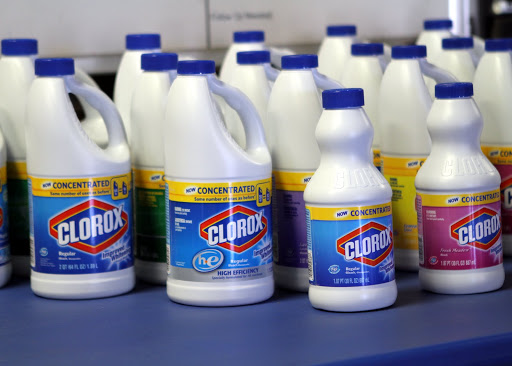
Americans are doing more housecleaning and disinfecting amid the COVID-19 pandemic and many are turning to wild and dangerous tactics—like drinking and gargling bleach solutions.
Back in April, the agency noted an unusual spike in poison control center calls over harmful exposures to household cleaning products, such as bleach. The timing linked it to the spread of the pandemic coronavirus, SARS-CoV-2 (not statements by President Trump). But to get a clearer idea of what was behind the rise, CDC researchers set up an online survey of household cleaning and disinfection knowledge and practices.
In all, they surveyed 502 US adults and used statistical weighting to make it representative of the country’s population. The findings—published Friday in the CDC's Morbidity and Mortality Weekly Report—are stunning.
Overall, 60 percent said they were doing more cleaning and disinfecting amid the pandemic and 39 percent admitted to doing at least one non-recommended cleaning practice the CDC considers high risk.
The most common risky practice was washing fruits, vegetables, and other foods in bleach solutions. A total of 19 percent said they did this. From there, 18 percent said they used household cleaners—not hand soap—to wash their hands and/or other body parts. Ten percent said they misted themselves with household cleaners and disinfecting products.
-
39% of respondents reported a high-risk cleaning practice
-
Knowledge of safe cleaning practices
Most concerning, 6 percent of respondents said they intentionally inhaled the fumes of household cleaners, including bleach. And 4 percent of people reported gargling or drinking household cleaners, soap solutions, and bleach solutions.
Unsurprisingly, 25 percent of respondents also reported unpleasant health effects from exposures to cleaning products, such as dizziness, skin irritation, nausea, and breathing problems.
On a set of questions about safe cleaning practices, the participants didn’t fare well. Only 23 percent knew that one shouldn’t use hot water to make bleach solutions. And only 35 percent knew that bleach should not be mixed with vinegar. Fifty-eight percent knew that bleach should not be mixed with ammonia. (Heating bleach or mixing it with vinegar or ammonia can create chlorine or chloramine gases that can damage lung tissue.)Despite the poor performance on these questions, 82 percent reported that they strongly agreed or somewhat agreed with the statement that they knew how to clean and disinfect their home safely.
The authors concluded that:
Despite the knowledge gaps and high-risk practices identified in this survey, most respondents believed that they knew how to clean and disinfect their homes safely; thus, prevention messages should highlight identified gaps in knowledge about safe and effective practices and provide targeted information using innovative communication strategies (e.g., digital, social media) regarding safe cleaning and disinfection.
Those messages include making sure people know to read the safety information on product labels, only use room temperature water when diluting cleaners (unless otherwise instructed on the label), avoid mixing chemicals, wear skin and eye protection, clean in well ventilated areas, and keep cleaning products out of reach of children.
Health - Latest - Google News
June 06, 2020 at 03:21AM
https://ift.tt/37239HQ
Americans are drinking bleach and dunking food in it to prevent COVID-19 - Ars Technica
Health - Latest - Google News
https://ift.tt/2zrj9Ud
Bagikan Berita Ini















0 Response to "Americans are drinking bleach and dunking food in it to prevent COVID-19 - Ars Technica"
Post a Comment